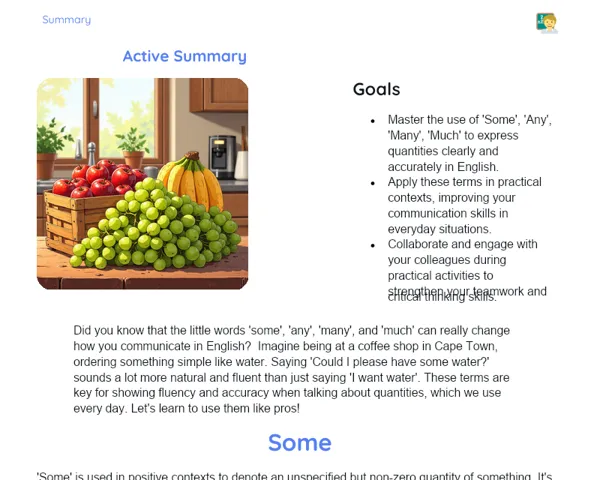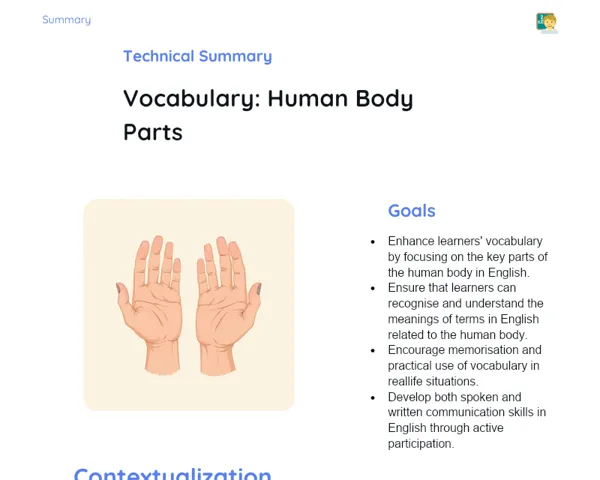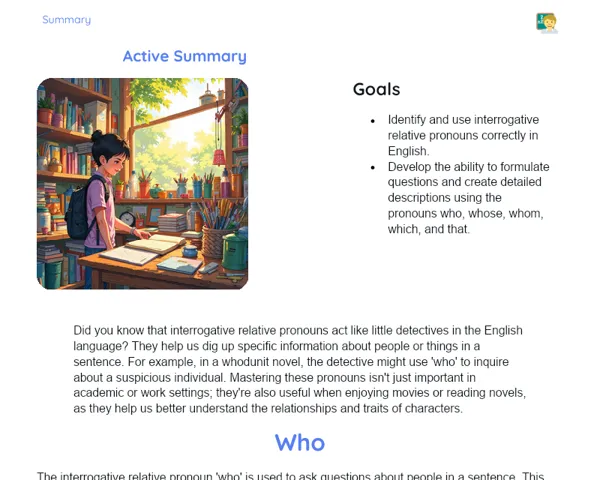Goals
1. Know how to ask questions when you need clarification in English.
2. Build up your assertive communication skills for both daily and professional conversations.
3. Practice coming up with polite and appropriate questions.
Contextualization
Being able to ask for clarification is vital for clear communication. Just picture a situation where you’re scratching your head over an instruction at work or a question during a job interview. Knowing how to ask for clarification in a clear and polite way can really turn things around. This skill isn’t just handy in a classroom; it’s useful in many social and work situations, enhancing interactions and preventing mix-ups. For example, a software developer must grasp project specifications to deliver what’s expected.
Subject Relevance
To Remember!
Formulating Questions
Crafting questions means forming clear and direct queries when you need clarification. This involves selecting the right terms and structuring your question in a way that makes it easy for the other person to understand. Well-crafted questions help steer clear of misunderstandings and ensure effective communication.
-
Pick clear and specific words.
-
Organise your question logically.
-
Stay away from vague or convoluted questions.
-
Use polite phrases when asking for clarification.
Assertive Communication
Assertive communication is your ability to express your thoughts, feelings, and needs clearly and directly, without being nasty or passive. When asking for clarification, assertive communication helps convey your message respectfully and ensures the other person understands what you're asking.
-
Be clear and direct in your expressions.
-
Keep a courteous and polite tone.
-
Avoid passive-aggressive behaviours.
-
Show confidence and courtesy in your communications.
Useful Expressions
Useful expressions are specific phrases that can help you ask for clarification politely and effectively. Knowing and using these expressions smooths out communication and shows your listener that you’re keen to get a clear understanding.
-
Be familiar with phrases like 'Could you please clarify...?' and 'Can you provide more details about...?'
-
Use polite language when posing questions.
-
Tailor your expressions according to the context.
-
Practice these expressions in various settings to gain confidence.
Practical Applications
-
In a business meeting, an employee can use the expressions they've learned to ask for more info about a new task or project.
-
During a job interview, the candidate can seek clarification on the responsibilities of the role to ensure they fully understand what’s expected.
-
In a classroom, a student can ask their teacher for further details about an assignment or a lesson that was unclear.
Key Terms
-
Formulating Questions: Creating clear and direct questions to request clarification.
-
Assertive Communication: Clearly expressing thoughts, feelings, and needs without being aggressive or passive.
-
Useful Expressions: Specific words and phrases to politely and effectively request clarification.
Questions for Reflections
-
Reflect on a recent instance where you didn’t grasp something immediately. How could you have asked for clarification more effectively?
-
In what ways can assertive communication positively influence your interactions at school and in the job market ahead?
-
Which useful expressions do you think are most essential for asking for clarification and why?
Clarity in Communication Challenge
This mini-challenge aims to put into practice the skills gained during the lesson, concentrating on formulating questions to ask for clarification clearly and politely.
Instructions
-
Find a partner to take on the challenge.
-
One of you will explain an activity or task in an intentionally vague way.
-
The other person must ask clarification questions using learned phrases like 'Could you please clarify...?' and 'Can you provide more details about...?'
-
Swap roles and repeat the exercise.
-
At the end, discuss how the questions helped clear up your understanding of the task or activity.



